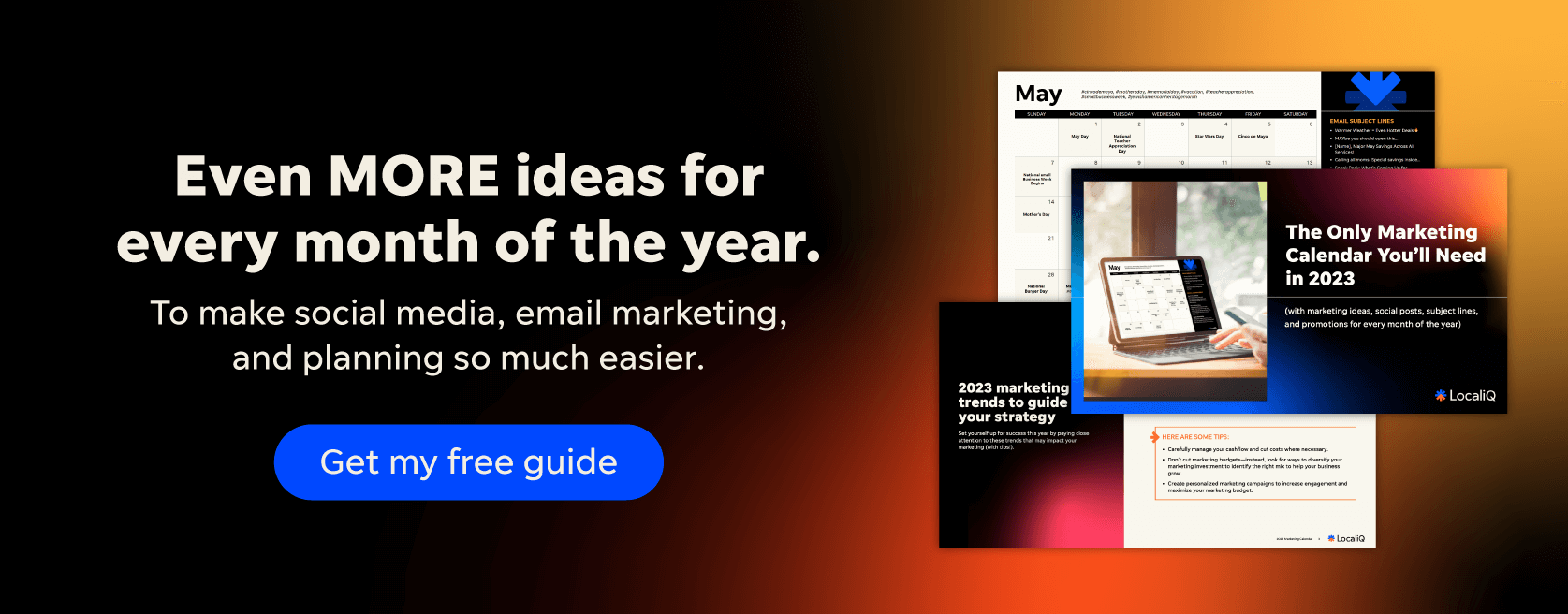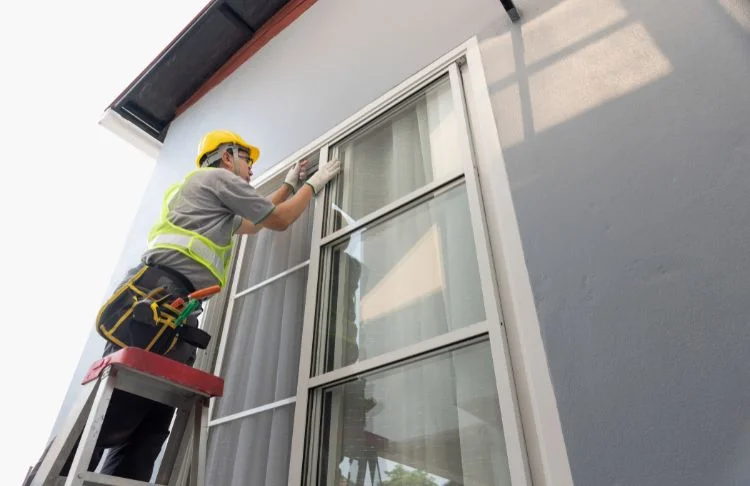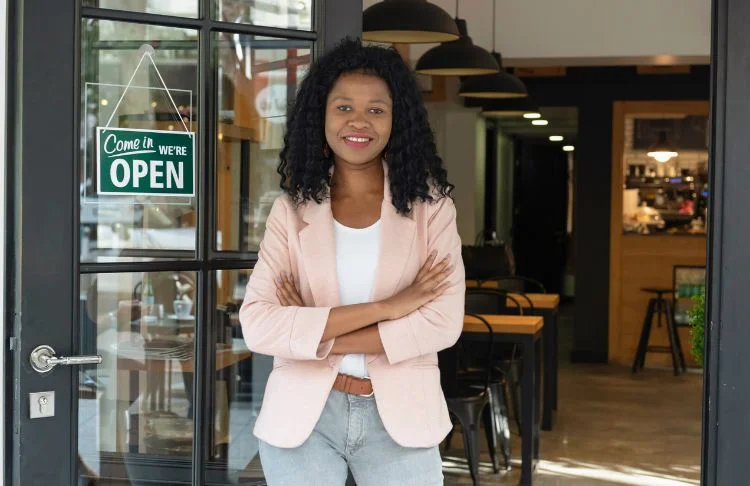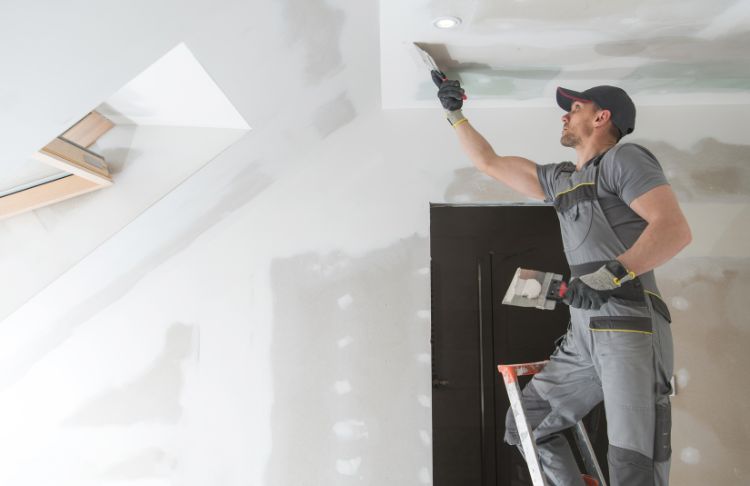Have you ever hummed a local flooring company’s jingle or spied typography that reminded you of your favorite soft drink? That type of brand awareness is absolute gold for growing businesses. When people recognize your brand—and feel positively towards it—they’re more likely to buy from you. And less likely to compare you on price.
But how do we achieve this level of brand-recognition nirvana?
To find out, we broke down some of the best awareness campaign examples we could find. The list ranges from mega brands to local shops, so no matter what type of business you’re marketing, there’s plenty of inspiration here.
Table of contents
- What is brand awareness?
- How do you build brand awareness?
- 9 successful brand awareness campaign examples
⏸️ Download the free Definitive Guide to Brand Awareness to learn more after reading about these examples.
What is brand awareness?
Brand awareness is the extent to which people are familiar with your business, branding, and products. They may not be customers yet (although they might be), and they may not have formed an opinion, but they know your brand exists, and probably know how it compares to your competitors.
When someone hands you a Kleenex instead of a tissue or an outline of an apple with a bite taken out of it makes you think of cell phones, that’s particularly strong brand awareness.

You don’t need to see the name to know what these signs lead to. That’s brand awareness.
Brand awareness is different than lead generation.
Brand awareness campaigns focus on introducing people to—or reminding people of—your business, mission, and products. They’re about creating familiarity and affinity.
Lead-generation campaigns are designed to get people to take action, like setting up an appointment or filling out a form. They have a direct call to action that converts visitors and viewers into qualified leads.
Brand awareness tactics can still drive conversions, but it’s not the main goal. Instead, your brand awareness strategy generates trust and makes your business stand out. When people know who you are and what you do, they’re more likely to click your ads and pick your products.
How do you build brand awareness?
You’ll notice a few foundational attributes of brands with high awareness. They differentiate themselves from competitors, keep their message and image consistent, and make their brand relatable to their target audience.
Want to keep your business top of mind? Start with these tips.
Create compelling brand messaging
Nike says, “Just Do It.” Disneyland is “The happiest place on earth.” Allstate wants you to know that “You’re in good hands.”
These are all examples of clear, concise brand messages. When creating your own brand message, think about your value proposition—the singular promise you make to solve a specific problem for your ideal customer. Let that guide how you write product descriptions, taglines, and ad copy.
Make visual assets consistent
Repetition enables memory. Walk down the grocery store aisle and you can spot your favorite detergent or potato chips at a glance. That’s because you repeatedly see the same colors, images, and typography on packages, ads, and branded swag.
Take the ubiquitous Coca-Cola bottle as an example.
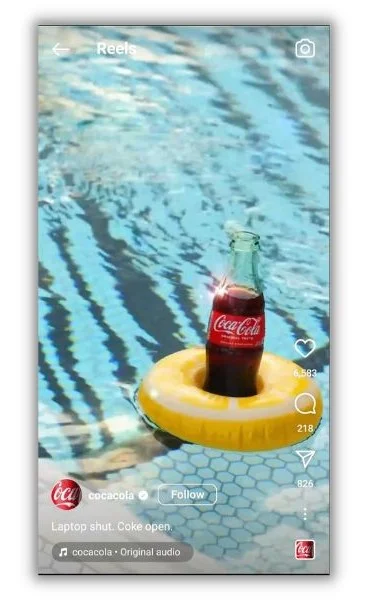
Coca-Cola has kept elements of its branding consistent for a century.
You could probably recognize it by shape alone. Then there’s the color and the iconic script. If the soft drink giant had used a variety of colors and fonts across its brand, you might not be able to pick it out so easily
Position your brand in the market
Unless you sell a genuinely one-of-a-kind product for a very niche purpose, you have competitors. What makes your business and solutions different? What adjectives do you want people to associate with your brand (innovative, inexpensive, sustainable)?
All of that rolls up into your brand positioning, also called your unique selling proposition.
Think about the outdoor clothing brand Patagonia. It positions itself as a leader in sustainability. Have a look at this now-famous ad the brand ran in the New York Times.
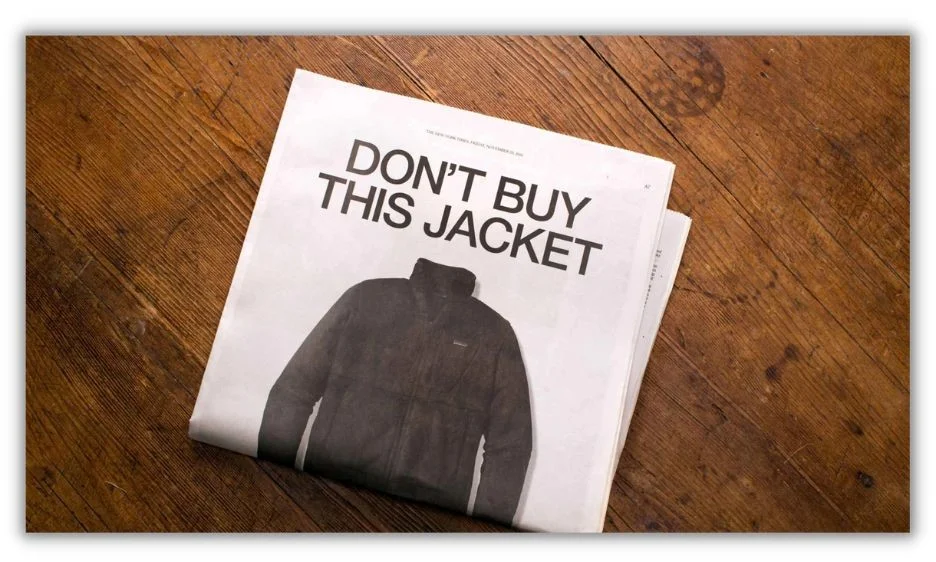
Patagonia continually reminds people that its focus is sustainability.
The message was to keep using the jacket you already have because that’s better for the environment. It was a highly successful brand awareness campaign that helped solidify Patagonia’s brand positioning.
📚 Free guide >>> The Small Business Marketing Plan (+Templates)
9 successful brand awareness campaign examples
Brand awareness campaigns can show up in print, in social media, in person, and over the airwaves. Let’s break down a variety of them to see what we can learn.
1. Engage your audience on social media
Social media is an incredible channel for brand awareness. Not only can you reach people who have never heard of you, but you can also engage with them directly to stay top of mind.
Kentucky Fried Chicken regularly puts on a masterclass of engagement on X (formerly Twitter).
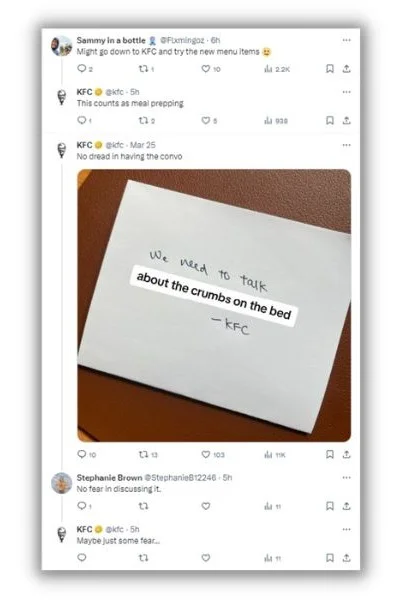
KFC is known for its spicy retorts on social media.
KFC builds affinity with everyone who sees and enjoys its playful banter. That keeps the brand in people’s consciousness even when they’re not ready for a bucket of chicken.
Social listening helps you know when someone mentions your brand or a relevant topic (like fried chicken if you’re KFC). Then, you can jump into the conversation at will.
2. Participate in online communities
Online communities are an exciting way to introduce your brand to niche groups of people. Find a Facebook group, Slack group, or message board platform like Reddit that regularly discusses the things you sell. Ask questions, offer advice, and become a part of the community.
Believe it or not, one of the best community marketers out there is a Ford salesman from Salina, Kansas, named Tim Bartz.
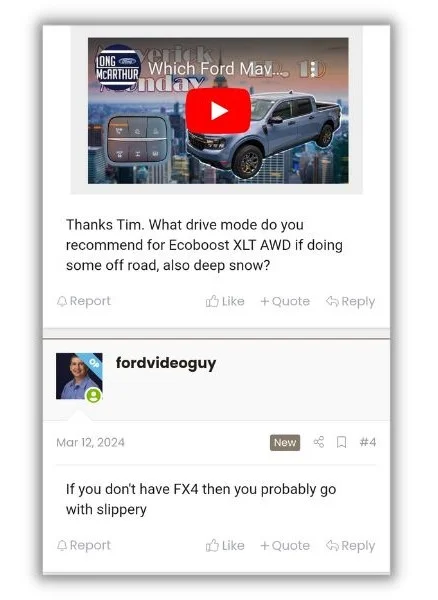
Tim Bartz connects with his target audience on message boards full of Ford fans.
Instead of going for the hard sales pitch, Tim spends time answering questions about trim levels, features, and delivery dates. His efforts pay off. People regularly travel from across the country to buy from Tim because they trust him. That’s made Long McAurther Ford (where Tim works) one of the highest-volume Ford dealers in the state despite being located in a relatively small town.
This is an easy strategy to copy. Search Google or Reddit for clubs and networks relevant to your products and start engaging. You can also create your own brand community. Just remember to prioritize being helpful. This is a brand awareness campaign, not a direct sales opportunity. Put in the time, and people will come to you.
3. Use branded hashtags
Hashtags help your social media posts and business get found online. When people click a popular hashtag like #pizzaintoronto, your video of ooey, gooey, melty slices will show up.
But there’s another hashtag strategy that makes for a great brand awareness campaign example. It’s using unique, branded hashtags to get people to share your brand with their networks.
Here’s how it works: You create a hashtag related to your brand, promotion, or business name. People tag their posts with your hashtag so their connections see it, and then those connections start using it, too.
Here’s a fun one from Charmin that encourages people to share the love of a…umm…clean seat.

Branded hashtags can be a fun way to get the word out about your brand.
You don’t have to be a multinational brand to use branded hashtags. Just about any business can do it. Look at how this local beer shop added two creative tags to its event post.

Branded hashtags are great at building a community for local businesses.
One tag calls out the business’s name. The other is a play on words. Fans of the shop can use either one to connect with other customers and show their support—introducing even more people to the business.
4. Sponsor local events
From 5Ks to health fairs, local events offer an interesting opportunity to get your brand in front of a large audience.
Local businesses benefit from in-person events. You are often mentioned in promotional materials and at the event itself.
Plus, most events cater to a particular audience. Check out this wine-tasting and networking event for Sacramento community managers. The premier sponsor is a business that sells HOA insurance—a perfect match for the people in attendance.
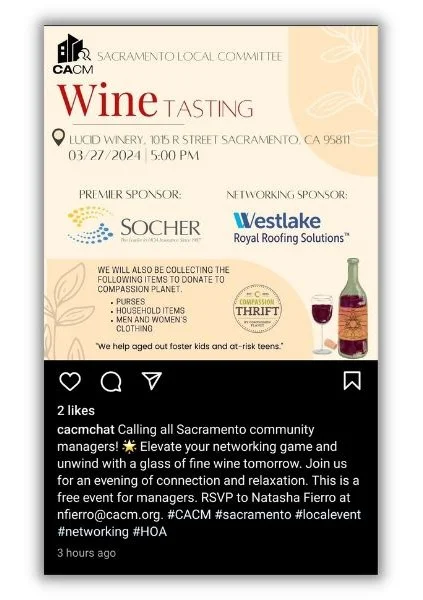
Sponsor in-person events to show that you’re committed to supporting local communities.
It’s a little more work, but you can also host your own events. And you can do it digitally to reach a niche audience spread across a larger geography.
The Cartoonist Cooperative created this cool event for its target audience of desk-bound creatives.
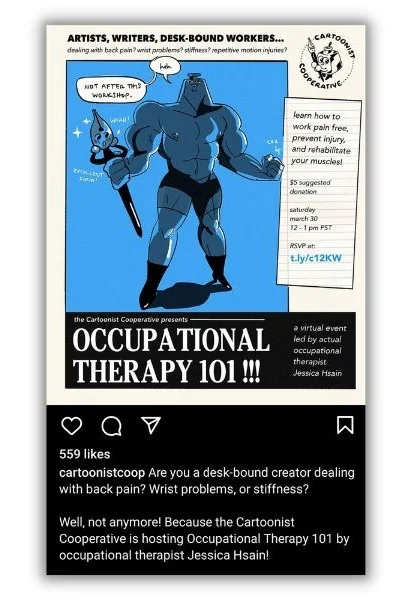
Identify what your target audience needs, then organize an event that provides it.
The Cooperative identified its members’ (literal) common pain points and partnered with a professional who could help solve them. That’s a great lesson as you consider which events you can participate in. Ask yourself, “Will my ideal customers benefit from this event?”
5. Publish helpful content
Publishing helpful content makes the list of brand awareness examples for two reasons. First, it builds affinity for your brand by helping someone when needed. Second, it proves you have expertise in your area, which helps people feel more confident in your products and services.
This is the perfect example of helpful content from a restaurant known for its meat dishes. The video teaches viewers about a cooking style called reverse searing.
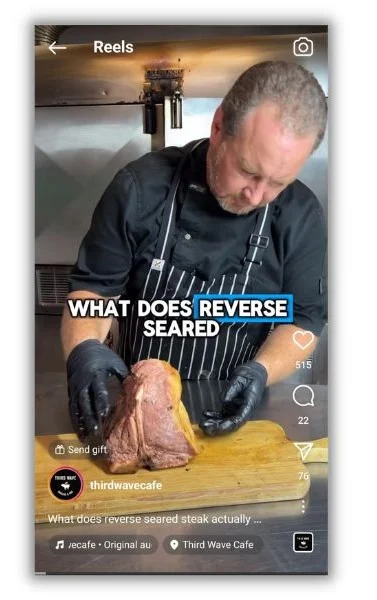
Establish your expertise by publishing helpful content.
The restaurant doesn’t tout its daily specials or newest tasting menu. It simply explains how reverse searing works and how to do it right. Not only is that useful information for home cooks, but it also demonstrates the restaurant’s ability to make great food.
Try it yourself by thinking of a few common questions your customers have. Then, write or video an answer and share it across multiple platforms, such as your website, email, and social feeds.
6. Appear on podcasts
Podcasts continue to gain popularity. There’s now a podcast for just about any topic and fanbase. You can reach this growing audience by sponsoring a relevant show. Even better, be a guest on one to show off your knowledge.
Podcasts are a great brand awareness example because they can target an audience by location, topic, or both. For example, Interior Designer Stephanie Calderon appeared on a podcast episode featuring local business owners in Charlotte, North Carolina.

Most large and medium-sized cities have locally focused podcasts.
She has the right credentials to be on the show as a business owner. The listeners—other business owners in her area—are also potential customers who are now aware of her business.
Try searching for “[industry or location] podcast” on Google and see what comes up. Then reach out to the host and pitch yourself as a future guest.
7. Work with influencers
Influencer marketing was once the playground of big brands. But micro-influencers—people with a smaller, highly engaged following—made it accessible to businesses of all sizes.
The beauty of influencers is that they can instantly tap you into a group of people who have never heard of your brand but would like what you sell. You can often do this by simply giving an influencer one of your products.
Here’s how the lifestyle subscription brand FabFitFun did it. They sent a themed box of goodies to techsavvymama, a teacher and influencer with roughly 10K followers.

Prioritize influencers with high engagement on their posts rather than just a high follower count.
The influencer waxed poetic about each item in the box and the overall experience of working with the brand. Given the types of things the influencer posts about, her audience is likely parents and teachers, a perfect target for the brand.
8. Partner with other brands
We love getting double the benefit with half the investment, so partnering with another brand is one of our favorite awareness campaign ideas.
You’ll usually work with a complimentary business in a co-brand awareness campaign. For example, if you’re marketing a yoga studio, link up with an athletic clothing store or health foods retailer. That’ll give you access to an audience of like-minded people.
But sometimes, you have to break the rules. e.l.f. Cosmetics is known for its creative collabs, but none are funnier than this makeup mashup with Liquid Death water.
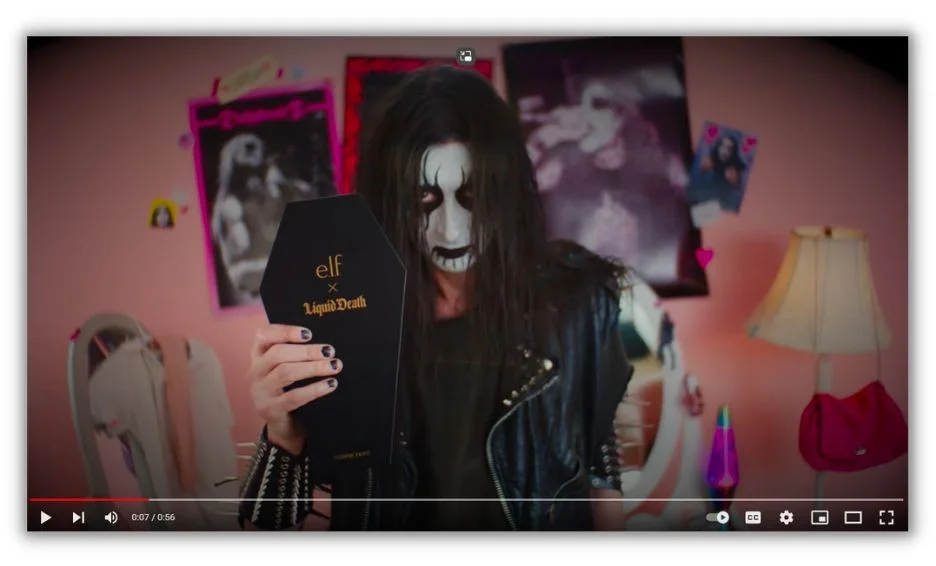
Add a little shock factor by creating unexpected collaborations.
The unlikely duo created a heavy metal-themed Corpse Paint cosmetics box (packaged in a coffin, of course). While it was an actual product for sale, the ads continued to rack up views and comments, generating awareness for both brands long after they sold out.
Your co-campaign doesn’t have to be this elaborate (but kudos to you if it is). A simple social post, tagging each brand is a good start. You could also partner up on a giveaway, which brings us to our final brand awareness campaign example.
9. Run giveaways on social media
If you want to gain followers and boost awareness in a hurry, run a social media giveaway. Even a small sweepstakes or contest can take off like wildfire.
Look out how Jordan Walker, an esthetician from Savannah, nailed it with her product bundle giveaway.

If you ask people to take several steps, make sure the giveaway is worth the effort.
See how Jordan offered several ways to earn more chances to win? People could get additional entries by tagging a friend, sharing the giveaway on their Instagram Stories, and following Jordon on TikTok. She backed it up with a valuable prize that motivated people to take action.
There’s a lot to take away from your own giveaway. Think about where your audience is and where you want it to grow. Set the rules to encourage people to share your brand with their networks. Match the value of the price to the ask. A smaller gift is fine if you want someone to like your post. But for a multi-step process, offer something more significant.
Learn from awareness campaign examples
Brand awareness campaign examples come in all sizes. Some are huge like a big brand buying Super Bowl ads. But others can be very simple, like a real estate agent handing out cards at a coffee shop.
The point is that brand awareness is all around us. Look for how other businesses do it, learn from their example, and experiment for yourself.
To get you started, here’s a recap of the brand awareness examples we covered:
- Engage your audience on social media
- Participate in online communities
- Use branded hashtags
- Sponsor local events
- Publish helpful content
- Appear on podcasts
- Work with influencers
- Partner with other brands
- Run giveaways on social media

